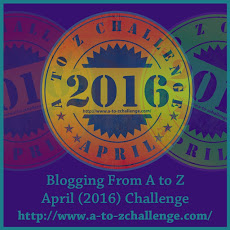One of the writing/storytelling activities that I did as a teacher was entitled, “Elements of Story”. The premise of the lesson involved a discussion with the class of elements necessary to make good fictional stories. The elements that we developed were: character, setting, when the story takes place, a problem to be solved and a solution to the problem. We also added sub-characters that included helpers and hinderers to the plot.
I would end the lesson by having everyone in the class close their eyes and picture a character for a story in their minds. I would select one student and ask if the character was male or female. After they responded I would ask everyone in the class to change the image of their character to fit that answer. I continued to get more feedback about the character, changing the images that were in everyone’s head until I had enough information to define the character. I made a chart of all of their answers. I would follow that with brainstorming as a group all of the other elements of story.
My next task was to take the information that the class generated and create the beginning of a story by writing it myself. I tried to use all of the character descriptions generated in my writing. Since the class generated a number of potential problems and solutions, I chose one that had the greatest potential for the students to take seriously. I wrote enough of the story to set up the character, setting and problem. In some cases I added some of the helpers and hinderers. What I returned to students was a piece of writing that needed a solution. I pointed out to the class that we had already come up with solutions, they just had to figure out how to incorporate the one they chose into the story.
I placed the students in pairs and their task was two-fold. They had to complete the story, in the same style as it had begun, and they had to learn to tell it to the class. Once told in class, they were going to perform it to other classes.
Designing it this way provided the students with a model for writing, (my beginning), which hopefully encouraged them to look at style and use of language. It also provided them with multiple audiences for their works. Knowing that they would perform their story for a lower grade or an upper grade influenced the way they completed their stories. It also made them take the assignment more seriously.
On the whole the hardest part for me was actually trying to come up with stories based on some of their descriptions. A number of the stories ended up in the realm of fantasy.
Here are some of the characters I had to work with: Jonah: Male, chubby, strong, alien, short, long hair, mean, wears sunglasses, barefoot, likes science, likes to fly, Mohawk, likes cheese. ugly; Brad: male, small, blond, mean, funny at times, baggy jeans and T-shirt, rich, psychotic, annoying.; Bridget: female, small, blue eyes, long blond hair, 3 years old, bossy, green tail, big bow in hair, poor, freckles, glasses, magical power, shuffled to relatives, always wears dresses.: Sarah: female, boxer, black hair, tall, nice, crooked nose (broken), rich, lived in mansion, wears glasses, wears fancy clothes
The activity worked well. I’ve saved all of the unfinished stories that I wrote for all the years that I did this activity. Someday I’ll have to look at the stories again and decide if it is worth it for me to complete any of them.

 A to Z Blog Challenge
A to Z Blog Challenge
Pingback: hdhstory.net» Blog Archive » Storytelling success
Pingback: N – Nothing, Nada, Null, Rein, Zero | hdhstory.net